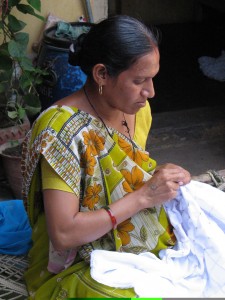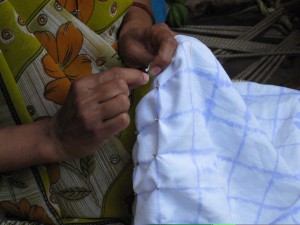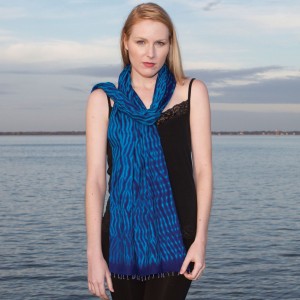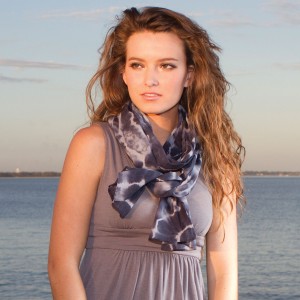The Art of Indian Bandhani & Shibori
Sevya Handmade has an extensive range of fair trade scarves that showcase the beautiful Indian arts of Bandhani and Shibori.
The word “bandhani” comes from the Sanskrit word “bandha” which means, “to tie” and refers to the ancient Indian craft of tie and dye. This tie and dye can be done on any material, but the colors are most vibrant when the tying is done on pure silk scarves.
The art of bandhani is an extremely intricate craft, in which the fabric is tied very tightly with thread at several different points, according to the motif that is printed on the fabric using carved wooden blocks. The placement and quantity of the knots, as well as the way the cloth is tied, determines the pattern when the fabric is opened. The artisans use either a long pinky nail that they have grown out or a thimble with a sharp point that is inserted into the fabric at the places where the ties are done. This portion of fabric is then tied and dyed to create the pattern.
The tradition of Indian bandhani began around 5000 years ago and is one of the oldest forms of tie and dye still practiced today. Both men and women, mostly in the states of Gujarat and Rajasthan in Western India, practice Bandhani craft. The women of these regions often wear sarees, blouses and shawls made using the bandhani technique, and the women also make special pieces for their wedding trousseau. The traditional designs, motifs, and color palettes are specific to each community and reflect the animals and plants of their local environment Sevya’s Amba Bandhani Scarf is made with pure georgette silk and has motifs including elephants, birds, vines, and flowers that are all native to the region of Western Gujarat where this scarf is made. There are few women who have the skill level required to make this scarf, as the bandhani ties are very small and intricate. In the craft of bandhani, each pattern has a special name and certain designs are worn for specific occasions, such as religious ceremonies or weddings.
Shibori is another style of tie and dye, and the word comes from the Japanese word shiboru, which means "to wring, squeeze or press." Shibori is a way of embellishing textiles by shaping the cloth and then securing with threads before dyeing. The fabric can be folded, crumpled, or twisted, all of which give the fabric its own unique look. True shibori and bandhani fabrics cannot be produced by machine, only by hand.
Sevya’s collection of Shibori Cotton Scarves and Sarongs exemplify the diversity of styles in shibori tie dye in a wide range of colors and patterns. Our Shibori Beaded Scarves combine shibori with beautiful beaded tassels, which are handmade by women artisans in Gujarat, India.








